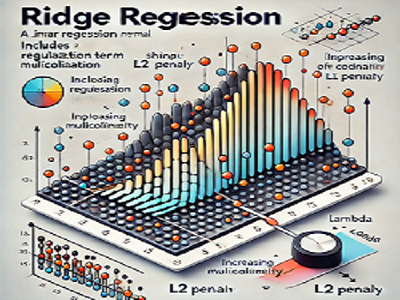
Statistical modeling is the process of using mathematical frameworks to represent and analyze real-world data and phenomena. It involves creating a mathematical description or model that captures the relationships between variables in a dataset, helping to make predictions, test hypotheses, or infer conclusions about the data. The goal of statistical modeling is to understand underlying patterns in the data and use them for informed decision-making.
Key Components of Statistical Modeling
- Dependent and Independent Variables:
- Dependent Variable (Response): The outcome or variable that the model aims to predict or explain.
- Independent Variables (Predictors): The variables that are used to predict or explain the dependent variable.
- Types of Statistical Models:
- Linear Models: Describe relationships between variables using straight-line (linear) relationships. Examples include:
- Simple Linear Regression: Models the relationship between one independent variable and one dependent variable.
- Multiple Linear Regression: Models the relationship between multiple independent variables and a dependent variable.
- Nonlinear Models: Describe relationships that are not straight-line relationships. Examples include exponential, logarithmic, or polynomial models.
- Generalized Linear Models (GLMs): Extend linear models to allow the dependent variable to have a distribution other than normal (e.g., logistic regression for binary outcomes).
- Assumptions:
- Statistical models often rely on assumptions about the data. For example, linear regression assumes linearity, independence of errors, normality, and homoscedasticity (equal variance of errors).
- Parameter Estimation:
- The model’s parameters (e.g., slope and intercept in a linear regression) are estimated from the data using methods like Maximum Likelihood Estimation (MLE) or Ordinary Least Squares (OLS).
- Model Evaluation:
- Goodness of Fit: Measures how well the model explains the variation in the data. Metrics include R-squared, Adjusted R-squared, and p-values.
- Residuals Analysis: Involves checking the errors (residuals) to ensure that they behave according to the assumptions of the model (e.g., normally distributed residuals).
- Cross-Validation: A technique used to assess the model’s performance on unseen data by splitting the data into training and testing sets.
- Types of Statistical Models:
- Descriptive Models: Summarize the main features of a dataset without making predictions (e.g., clustering models).
- Predictive Models: Focus on predicting future or unknown outcomes based on input data (e.g., regression models).
- Inferential Models: Aim to make generalizations or inferences about a population from a sample (e.g., hypothesis testing).
Examples of Statistical Models
- Linear Regression: Predicts a continuous dependent variable based on one or more independent variables.
- Logistic Regression: Used for binary outcomes (e.g., yes/no, success/failure) and produces probabilities.
- ANOVA (Analysis of Variance): Tests whether the means of multiple groups are significantly different from each other.
- Time Series Models: Analyze data collected over time to understand underlying trends or forecast future values (e.g., ARIMA models).
- Survival Analysis: Models time-to-event data, often used in medical research to predict the time until an event occurs (e.g., death, recovery).
Importance of Statistical Modeling
- Predictive Power: Statistical models allow predictions of future outcomes or behaviors based on historical data.
- Hypothesis Testing: It helps in testing hypotheses about relationships between variables.
- Decision-Making: Statistical models guide business, policy, and scientific decision-making by quantifying uncertainty and providing probabilistic insights.
- Understanding Relationships: Models explain how different variables are related and how they influence each other.
In summary, statistical modeling is a powerful tool that enables data analysis, predictions, and informed decision-making by simplifying complex real-world problems into mathematical representations.



